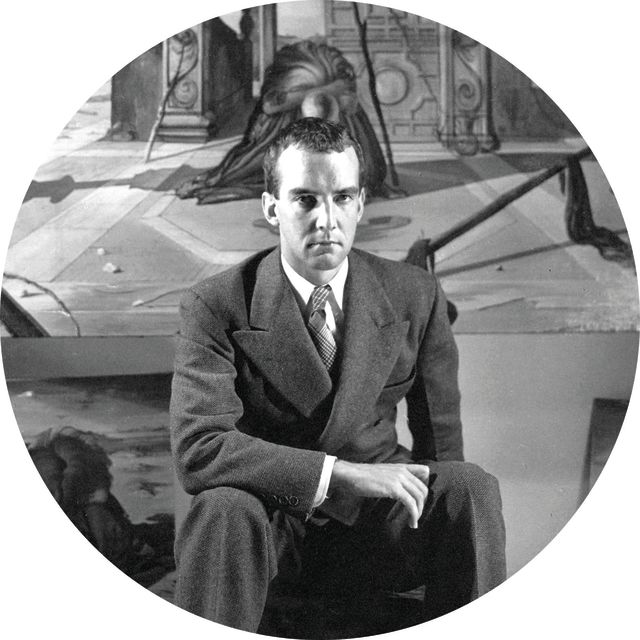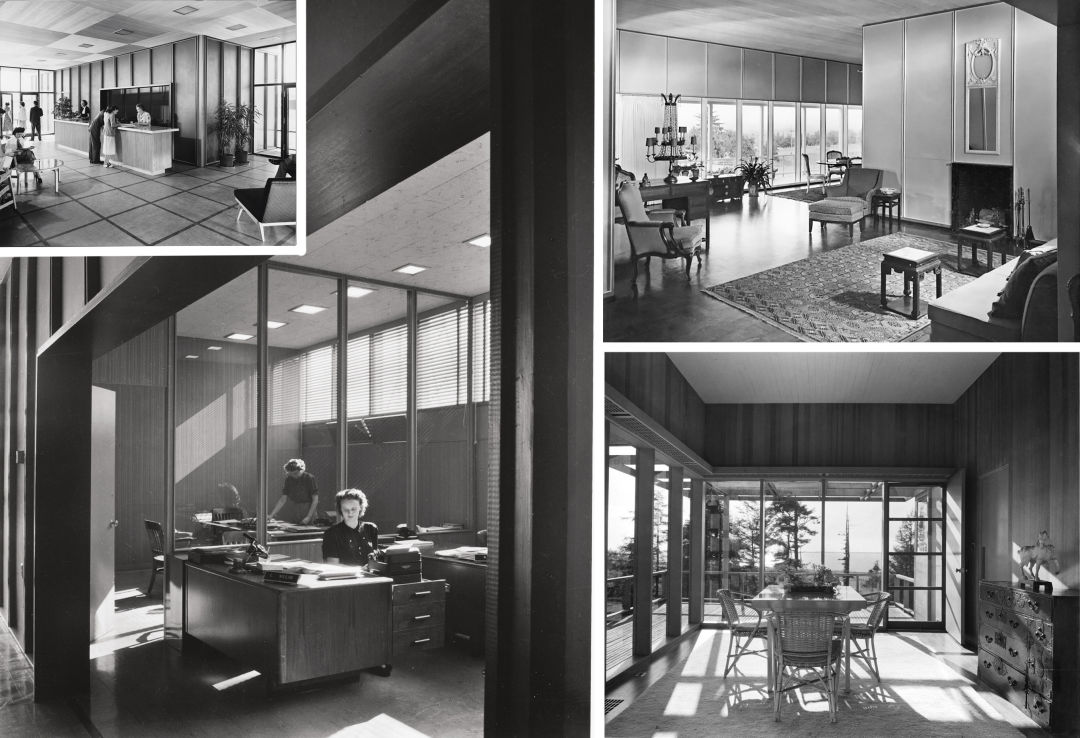A major new exhibit at the Portland Art Museum explores Yeon’s legacy.
Is there such a thing as “Northwest architecture”? John Yeon was never sure—ironic, given that many figured the son of a Portland timber baron helped invent the very thing.
“The subject remains interesting,” he once conceded. “It has long been of interest to me.”

You could say so. Yeon died in Portland in 1994, at the age of 83. He left behind a tiny architectural portfolio of about a dozen houses (notably the world-famous Watzek House in the West Hills) and just one public building. But his larger vision of place, craft, and aesthetic ambition still resonates. Imagine a high-design, distinctively Northwest house that might be built today—modernist in line and geometry, woodsy in aura, and, above all,
Photo: Yeon in 1941
attuned to what’s outside—and the vision probably owes much to the designer, collector, and conservationist.
“He was a pretty unusual character,” says Randy Gragg, the longtime local journalist who directs the University of Oregon’s John Yeon Center for Architecture and the Landscape. “He could look at a vista on the coast and see its essential aspects, but he also understood residential and European garden design. He was remarkable for breadth, depth, and especially range of scale.”
This month, Portland Art Museum opens Quest for Beauty, an exhibit encompassing Yeon’s architecture, conservation work, and eclectic collections of art and craft from around the world. The project will be the museum’s largest show ever dedicated to a single architect. At the same time, it will offer a portrait of a broader sensibility. Selections from Yeon’s own art collections, in particular, dig into the sources of his aesthetic. “You’ll see an intermingling of art work that’s unusual for an architectural exhibit,” says Gragg, a former editor and frequent contributor for Portland Monthly.
Gragg met Yeon in 1992 and adopted his work and legacy as a 20-plus-year “subproject,” as he puts it. The PAM exhibit unites the UO Yeon Center, which owns the Watzek House and two other Yeon properties; the museum’s European and Asian curators; Yeon’s longtime partner, Richard Louis Brown; and a other collaborators including acclaimed local firm Lever Architecture. Two books, location tours, lectures, and other events accompany the museum installation. Quest may not be the final word on Yeon, but it will define his work, life, and enthusiasms for a broad audience.
“Yeon put together one of the most diverse and interesting private collections in Oregon,” says Maribeth Graybill, PAM’s curator of Asian arts, of the exhibit’s assembly of objets. “And through it, you see him thinking like a decorator—the designer of domestic interiors drawn to things that complemented and contrasted with the severe linearity of his architecture.”
“John could appreciate the curvature found on a Rococo barometer,” Gragg says. “His aesthetic eye could find beauty in these different things, and translate that into his design vision.”

Clockwise from top left: Two views of the 1948 Portland Visitors Information Center, Yeon’s only public building; The Vietor House; The Shaw House
April 1953 found the editors of House Beautiful in a truculent mood. Elizabeth Gordon expounded on nothing less than “The Threat to the Next America”: as Gordon’s fervent eight-page essay revealed, that menace was modern architecture. Or, at least, certain modern architecture. Gordon railed against a “Cult of Austerity” led by Europeans like Mies van der Rohe and Walter Gropius, “the mystical idea that ‘less is more,’” and “a self-chosen elite ... trying to tell us what we should like and how we should live.”
If the magazine knew what it was against, it also knew what it was for. That issue’s cover featured the Shaw House, a Yeon design in Lake Oswego. Luminous, decorous, set on eight acres of suburban meadow, this was modernism House Beautiful could believe in: nothing less (Joseph Barry wrote) than “the architectural way to an age of humanism.” An ecstatic article praised Yeon’s use of modular paneling, a ventilation system tuned to the Northwest’s mild climate, and a compact layout amenable to “servantless operation.”
“A free man’s home of the future will be his palace,” Barry wrote, “and here is the style for it.”
Observers—and not just quasi-McCarthyite shelter-mag editors—did like to put their own stamp on Yeon. The Watzek House, completed in 1937, was hailed as a regionalist, all-American riposte to the placeless International Style; a later history of Portland architecture praised Yeon as an “exemplary representative of the rare breed of Renaissance men.” These aren’t necessarily bad descriptions, but the man himself seems to have chased a much simpler and more universal—if elusive—ideal.
“He came from a tradition that was about beauty,” Gragg says. In Yeon’s small but near-perfect architectural portfolio, Gragg notes a fanatical attention to detail and a thrifty economy. Yeon frequently used plywood, for example. Then again, he also spent 25 years sculpting a stretch of the Columbia Gorge into a landscape he called the Shire, using both bulldozer and exacting grass-varietal selections.
His legacy embraces precision and rigor, but also play and fancy. (“He loved the baroque and rococo, at a time when those things really weren’t very popular,” notes Dawson Carr, PAM’s curator of European art.) Working big or small, creating or collecting, the intelligence documented by Quest for Beauty gravitated to the exquisite.
“The main link between the different aspects of this exhibit,” Gragg says, “is in Yeon’s mind.”
The full article can be viewed HERE at Portland Monthly’s website.

